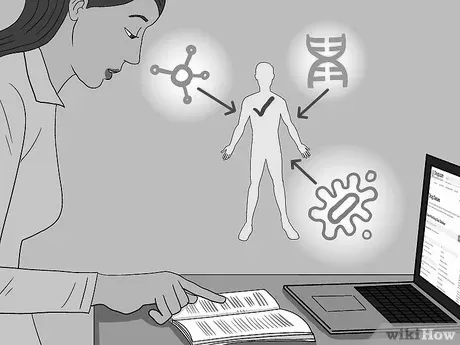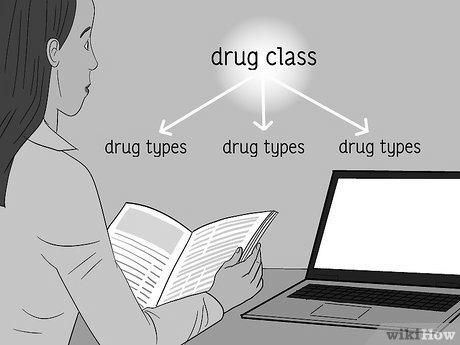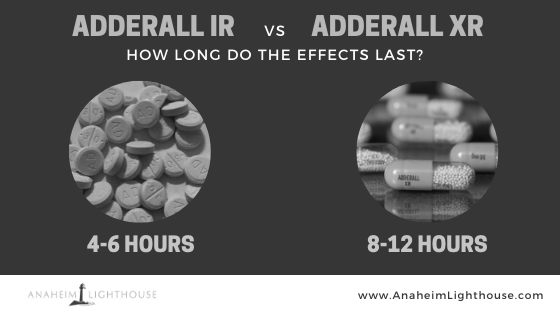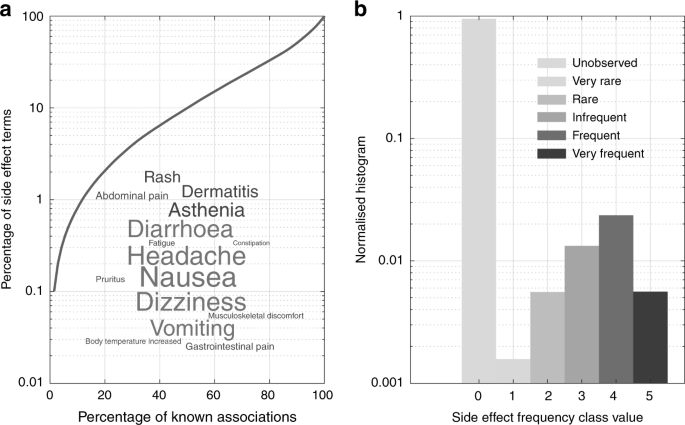Considering the sheer number of drugs, side effects, and drug interactions, pharmacology can be a challenging subject to study. To get through the course, you need to create a structure that will help you study efficiently. This structure will allow you to know what to focus on and what to leave out. This way, you won’t spend all your time going over information that you don’t need.
Computer-based pharmacology systems
Computer-based pharmacology systems help students study pharmacology more effectively, as they provide a more realistic experience. For example, the SimPHARM simulation tool creates a realistic clinical scenario for students by incorporating mathematical models of physiological body systems. It allows students to experience the real-life consequences of their decisions, and it also provides a better understanding of how to administer medications.
Pharmacology is a field that is increasingly important to the health care system, and computer-based pharmacology systems can be an effective way to learn this discipline. As well as advancing clinical medicine, pharmacology has an increasingly vital role in early market access. Pharmacologists also contribute to pharmacoepidemiology, which is the study of health risks related to drugs.
High-fidelity simulation models can mimic physiological responses, such as cardiovascular and respiratory symptoms. High-fidelity mannequins, such as SimMan 3G, can be used for training. These mannequins simulate the responses of a patient to a pharmacological intervention. They can be used for clinical skill development as well as multiprofessional team training and include pharmacists in the training.
The use of computer-based pharmacology systems has increased dramatically in the past decade. While they do not replace human teachers, they can greatly improve the efficiency of the course. Some universities use video material and a variety of other methods to teach pharmacology, including electronic books and simulations.
Computer-based pharmacology systems are becoming more sophisticated, and researchers are discovering new uses for them. They can assist basic and clinical pharmacologists in their research. Researchers can use these systems to find the best ways to use drugs and avoid unwanted side effects. These systems can also assist clinicians in evaluating patient outcomes.
Pharmacology is a complex science, and it is vital to understand how drugs work. The use of computer-based pharmacology systems can help clinicians improve patient care and find new treatments for the most common diseases. Clinical pharmacology requires an interdisciplinary view of all drug-using areas. For example, pharmacologists can evaluate biomarkers to determine how well a drug is working in clinical trials.
Pharmacology is an important field, which requires a highly skilled workforce. The number of drugs prescribed to patients is growing, making the regimen more complicated and resulting in a greater chance of drug interactions. This is a major challenge to public health and poses an increased burden on doctors. As a result, more patients are demanding more information about drugs.
Using groups to study pharmacology
If you want to succeed in pharmacology, creating a group study environment is important. This way, you can focus more on learning facts together with others. Groups also help you memorize terms and concepts. Using study guides and flashcards is one of the most effective ways to study pharmacology.
Students report high satisfaction with small group discussions. They also report improving their interpersonal and communication skills and improving their self-directed learning. Small group discussions also help students improve their understanding of various aspects of pharmacology, including drug-drug interactions, mechanism of action, and clinical relevance.
Using groups to study pharmacology can be a fun way to learn the subject. Several studies have demonstrated the effectiveness of this type of learning environment and have outlined effective teaching methods. There are many resources online that can be used to enhance student learning. For example, Kahoot offers thousands of educational games involving the study of pharmacology. However, before using these games, you must register with the site.
Students can also use information graphics to improve their understanding of pharmacology. Infographics can help students understand a drug’s mechanism of action, adverse effects, and other important aspects. These infographics can also help students learn difficult concepts such as drug class and adverse effects.

Although it is important to use textbooks and other learning resources to study pharmacology, there are no guarantees that you’ll be able to memorize every single detail. For instance, pharmacology is a long, difficult course that demands a lot of study. Having a group study environment helps students drill down on their study plan every day.
Group study is an important way to learn. By discussing topics with other nursing students, you will be able to better understand each other’s ideas and concepts. Groups are also helpful for reviewing information and identifying any problems. If you aren’t using groups to study pharmacology, you may not be getting the most out of your learning.
In a recent study, two authors examined a group study method. One group used a combination of techniques to help students learn pharmacology. The authors used a non-randomized approach to collect data from a sample of MD4 students during the summer of 2018. The researchers used informed consent to ensure that the study was fair, and excluded students who withdrew voluntarily from the course.
Taking a “drug-by-drug” approach to study pharmacology
When it comes to learning pharmacology, there is no need to learn every drug’s mechanism of action. Likewise, you should avoid learning all of the non-specific side effects that apply to almost all drugs. In addition, you should focus on specific side effects that are specific to a drug class. This approach will help you stay focused on the subject and avoid faltering during exams.
One of the most important tips when studying pharmacology is to set aside a realistic amount of time to study each topic. This is crucial because studying one topic in depth is more valuable than studying three in the abstract. It also helps to use interesting study aids to help you learn the material.
Another important tip when studying pharmacology is to take notes in class. This will help you review the material faster. Using infographics helps you to retain information easier than reading lengthy texts. These visuals will help you learn about the different properties of drugs, their mechanisms of action, their side effects, and interactions with other drugs.
It can be very challenging to understand pharmacology, especially when there are so many drugs and side effects. To learn pharmacology effectively, you must develop a learning strategy that will allow you to memorize the most important information. A successful learning strategy will help you study efficiently and solidify your knowledge during your clinical years. This is essential, as understanding how drugs work can make you a better physician.
Using mnemonics
Mnemonics are an effective way to remember important pharmacology facts. They are based on the first letters of target words and are particularly useful when you need to memorize large amounts of information. For example, you might want to memorize the side effects of statins, such as liver damage, flatulence, nausea, and voiding in pregnancy.
The use of mnemonics can also be effective when it comes to assessing clinical cases. Students can use mnemonics to help them think more critically and make more informed decisions about therapeutic options. Almost seventy percent of students found that using mnemonics helped them to remember essential information more quickly.
You can find pharmacology mnemonics on Pinterest or create your own by creating a simple graphic. These can be useful in many situations and are free to download. However, you should check the accuracy of these graphics before using them. If a particular graphic is not accurate, then you should double check it.
Another example of a mnemonic is to use cartoon characters to help you memorize specific drug names. Cartoon characters narrate stories about drugs and diseases, which reinforce concepts in your memory. The characters are also helpful in triggering memories, as they are familiar and can help you recall them.
There are other types of mnemonics to help you memorize the names of drugs and numbered parts. For example, one popular method is to think of certain drugs as morphine. For example, you could memorize the names of the drug by saying “morphin.” This method is more effective for remembering names such as omeprazole or proton pump inhibitors. You could also use metaphors to help you learn a new word or a new term.

You could also use acronyms to help you memorize key terms. For example, you could use a mnemonic called HELLP to help you remember the name of a disease whose symptoms are similar to those of a cholinergic crisis. Another mnemonic, LEAN, helps you memorize key drugs, including drugs that are used to treat pregnancy complications.
Pharmacology is a science that studies the actions of different drugs and their effects on the body. It involves different branches such as toxicology, clinical pharmacology, animal pharmacology, and neuropsychopharmacology. Modern pharmacologists use techniques from genetics, biochemistry, and molecular biology to turn molecular targets and mechanisms into therapeutic agents. They also develop methods for diagnostics and preventive care.
Toxicology
Toxicology is a scientific discipline that involves studying the harmful effects of chemical substances on living organisms. It focuses on the detection, diagnosis, and treatment of exposures to toxicants. The field of toxicology is interdisciplinary and covers many different topics. The science behind toxicology is rooted in biology, chemistry, and pharmacology.
The word toxicology comes from the Greek word TOXIKON. Toxicology is the study of the adverse effects of chemical and physical agents on organisms. Its practical applications include risk assessment and safety evaluation. According to Paracelsus, “All substances are poisons.” The objective of toxicology is to develop sustainable strategies for the safe use of chemicals, and to limit exposure to harmful compounds.
One of the most important aspects of toxicology is the dosage of a substance. Toxicants usually have different toxicity levels in different organs. In some cases, only one or two organs are affected. These organs are called target organs of toxicity. A common target organ of toxicity is the central nervous system. Less common targets include the muscles and reproductive systems.
Some toxicologists conduct chemical experiments on animals or cell cultures, while others study the chemical structure of natural chemicals. Some even extract chemicals from animals and plants. These jobs require advanced training in physiology and biology. The SOT also advises aspiring toxicologists to take a mathematics and statistics course to prepare for their career.
Toxicology plays an important role in occupational health and safety. The use of chemicals in the workplace poses numerous health hazards. It is essential for employers to understand the hazards of exposure and ensure that their employees do not become ill because of the substances they use.
Clinical pharmacology
Clinical pharmacologists provide specialist advice on the safe use of drugs in human medicine. They use their knowledge to improve patient care by offering advice on specific drug combinations, their side effects and the interactions between drugs. They are also frequently consulted by pharmaceutical companies about the development of new drugs. In addition, they may be asked to comment on drug-related events of public interest.
Pharmacology graduates can find employment in many different fields. They can work for pharmaceutical companies, regulatory agencies, or in hospitals. Others find careers in fields such as geriatrics, cardiology, and pediatrics. Many also go on to work in other health fields, such as gastroenterology and endocrinology.
Research is an important part of clinical pharmacology. By using research findings to improve drug treatment and safety, clinical pharmacologists develop new methods and strategies to help improve patient care. Much of this research is translational – transferring new scientific data about a drug to a rational patient care practice. Clinical pharmacologists should be better equipped to participate in translational research and early phases of human drug studies.
Increasingly, the rate of drug development has made clinical pharmacology a vital part of medicine. As a result, many medical schools have incorporated this discipline into their curricula. Students are typically taught clinical pharmacology during their fourth or fifth year of medical school. It is expected that students have a thorough understanding of the principles of drug action.
While there are many definitions of clinical pharmacology, it is a broad discipline with an important relationship with translational medicine. The operational model of clinical pharmacology highlights the close relationship between basic science and clinical practice.

Neuropsychopharmacology
Neuropsychopharmacology focuses on developing medicines to treat psychiatric and neuropathological conditions. It also aims to improve diagnostic tools and therapies. The goal of neuropsychopharmacology is to create drugs that can target specific neural pathways.
This branch of pharmacology combines previously isolated fields of science. It engages a broad range of professionals. Since the 1990s, the field has grown in popularity and formalized itself through several journals and institutions. In Hungary, the Hungarian College of Neuropsychopharmacology was founded in 1990. Although neuropsychopharmacology is a fast-growing field, it still exhibits a degree of flux, with research hypotheses often being modified based on new knowledge.
Researchers are trying to determine how different types of drugs affect brain circuits, including the one that controls emotion. This research has helped develop drugs for depression, anxiety, bipolar disorder, and sleep disorders. Researchers are also developing drugs to treat mood and behavior disorders.
This branch of pharmacology has evolved to bridge the gap between basic and clinical sciences. Originally, pharmacologists studied how drugs affected people’s brains, but now the field encompasses cutting-edge research on cellular and molecular biology. It combines anatomy and physiology with molecular and cellular biology to gain a fundamental understanding of how drugs affect the body. It also incorporates neuroimaging and other techniques to discover how drugs affect the brain and behavior.
Animal pharmacology
Animal pharmacology is a branch in the science of drugs and their effects on animals. It involves the study of drug composition, effects and mechanisms in organs and tissues, signal transduction, cellular communication, and chemical biology. This branch of science also deals with pharmacokinetics and pharmacodynamics. The former deals with the action of drugs and how they are absorbed, metabolized, and excreted in the body.
The branch of pharmacology is divided into several sub-branches. Some are related to the body systems they study, such as cardiovascular pharmacology, renal pharmacology, and neuropharmacology. Others focus on behavioral effects of drugs and their effects on behavior.
This branch is growing in popularity as a branch of pharmacology. It is closely related to veterinary toxicology, which grew in popularity in the mid-20th century. In addition to studying the pharmacology and toxicity of various drugs, animal pharmacology is often involved in the development of new antimicrobials and compounds. Veterinary pharmacology also requires a greater understanding of the various animal species that are subjected to a given substance. The branch of pharmacology is closely linked to the study of pharmacokinetics, which is crucial to the successful clinical trials of a new drug candidate.
Animal pharmacology is an integral part of human and animal health. It is one of the most important fields in human medicine and has numerous applications. Increasingly, the field of animal medicine is growing due to the increasing need for pharmaceuticals. The field also helps to save lives by preventing the spread of infectious diseases and other disorders.
Pharmacological target identification is one of the biggest challenges in drug discovery, so animal toxins have the potential to address this challenge. Toxins from animals have diverse origins and diverse pharmacology, making them a suitable starting point for drug discovery. For example, animal toxins bind to five of the seven pharmacological sites on NaV channels. Furthermore, 10% of the toxins isolated from marine snail venoms have reached phase I clinical trials.
Pharmacoeconomics
Pharmacoeconomics is the study of the costs and benefits of pharmaceutical products and their associated health outcomes. It considers different types of costs and outcomes, including direct and indirect costs, and typically evaluates the products from several perspectives. Cost-of-illness analyses, cost-effectiveness analyses, and cost-benefit analyses are common types of pharmacoeconomic analyses. The results of these analyses can help in clinical decision-making, formulary management, and allocation of scarce resources.
Pharmacoeconomics is a branch of medicine that studies how pharmaceutical products affect society. It focuses on the costs and benefits of a drug, as well as clinical, economic, and humanistic outcomes. This branch of medicine is vital to the health and welfare of our society, and the use of pharmacoeconomics methods can help in formulary management.
Pharmacoeconomic evaluations can also be used to evaluate the effectiveness of pharmacy practice services. As a member of the healthcare team, pharmacists can lead or provide these services. This branch of medicine is based on the concept of cost minimization. It aims to reduce the costs and improve patient health.
Pharmacological knowledge is used in many aspects of the health care field, from private industry to academic research. The research carried out in this field is vital to new drug discovery and helps improve human physiology. Physiologists and pharmacologists must have thorough knowledge of pathology and chemistry in order to conduct the proper research. In modern pharmacology, analytical chemistry and biophysical sciences are used to measure the effects of drugs.
Clinical pharmacology is the study of the therapeutic and medical effects of pharmaceutical products in humans. Pharmacokinetic and pharmacodynamic studies, comparative studies with other drugs, and surveillance programs are all part of clinical pharmacology. Its research aims to promote evidence-based medicine.







